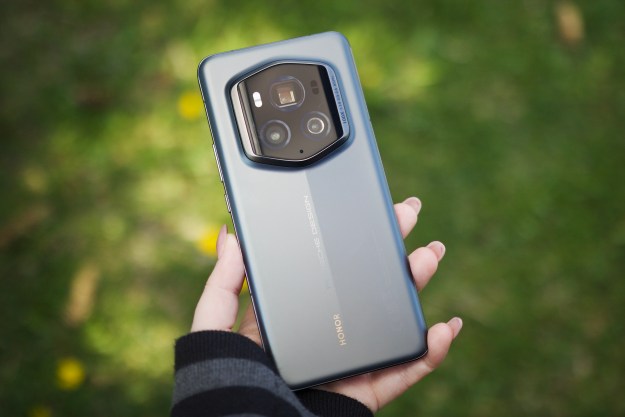
Predictably, the market is responding in kind. Alphabet’s stock is down about 5 percent in extended trading as of publication time.
So, what’s to blame for the miss? To some degree, it’s the falling price of Internet ads, a business that remains Google’s — and by extension Alphabet’s — bread and butter. Aggregate cost-per-click — how much advertisers are willing to pay for ads, essentially — fell about 9 percent from the same time last year, a steeper decline than the 5.8 percent that industry watchers were predicting. And separately, currency ups and downs impacted revenue. In the earnings report, Alphabet CFO Ruth Porat pointed to “ongoing strength of the U.S. dollar” as a major contributor to the year-over-year decline. “Our Q1 results represent a tremendous start to the year, with 17 percent growth year on year and 24 growth on a constant currency basis,” she said.
It’s not all doom and gloom, though. Alphabet’s overall first-quarter earnings were a substantial bump from the $6.47 a share it reported in the same period last year — a climb of about 16 percent. Paid ad clicks during the first quarter were also up a substantial 29 percent year over year, and the company’s Android business — now the “fastest-growing segment” of its revenue, according to Google CEO Sundar Pichai — performed quite well, bringing in $2 billion in Play Store and hardware sales.
Beyond ad and app sales, Pichai pointed to artificial intelligence and cloud computing as growing revenue drivers. “We’ve always been doing cloud … but as we’ve grown — really matured in how we handle our data center investments and how we can do this at scale — we’ve definitely crossed over to the other side to where we can thoughtfully serve … customers,” he said during today’s earnings call. Google previously predicted its cloud revenues will surpass its advertising revenues by 2020. “In the long run, I think we will evolve in computing from a mobile-first to an AI-first world.”
The surprise moneymaker this past quarter was Alphabet’s “Other Bets” category, the division that includes “moonshots” like Nest, Google Fiber, Alphabet’s life sciences and driverless car divisions, and other experiments. Investors expected revenues of $140.7 million this quarter, but the segment blew past those predictions with $166 million. That’s not to say Other Bets has quite reached profitability — it posted an operating loss of $802 million compared to last quarter’s $633 million on revenues of $80 million — but Alphabet execs confident in the category’s growth potential. Porat said that Google Fiber’s buildout represented a significant portion of the first quarter’s expense, and future cost growth would be mitigated by the “consolidation” of teams pursuing similar objectives. “We’re thoughtfully pursuing big bets and building exciting new technologies, in Google and our Other Bets, that position us well for long-term growth,” she told investors.
Some of that consolidation may take the form of sales. Alphabet is reportedly planning to spin off Boston Dynamics, a high-tech robotics lab it acquired in 2013.
All considered, though, Alphabet performed admirably this year. The company’s stock price has risen more than 43 percent over the past several months, and it briefly leapfrogged Apple in February to become the most valuable company.
Editors' Recommendations
- Google Pixel 9: news, rumored price, release date, and more
- All the new Chromebook features quietly announced at Google I/O
- Google I/O: Android Q will standardize navigation controls and add new gestures


